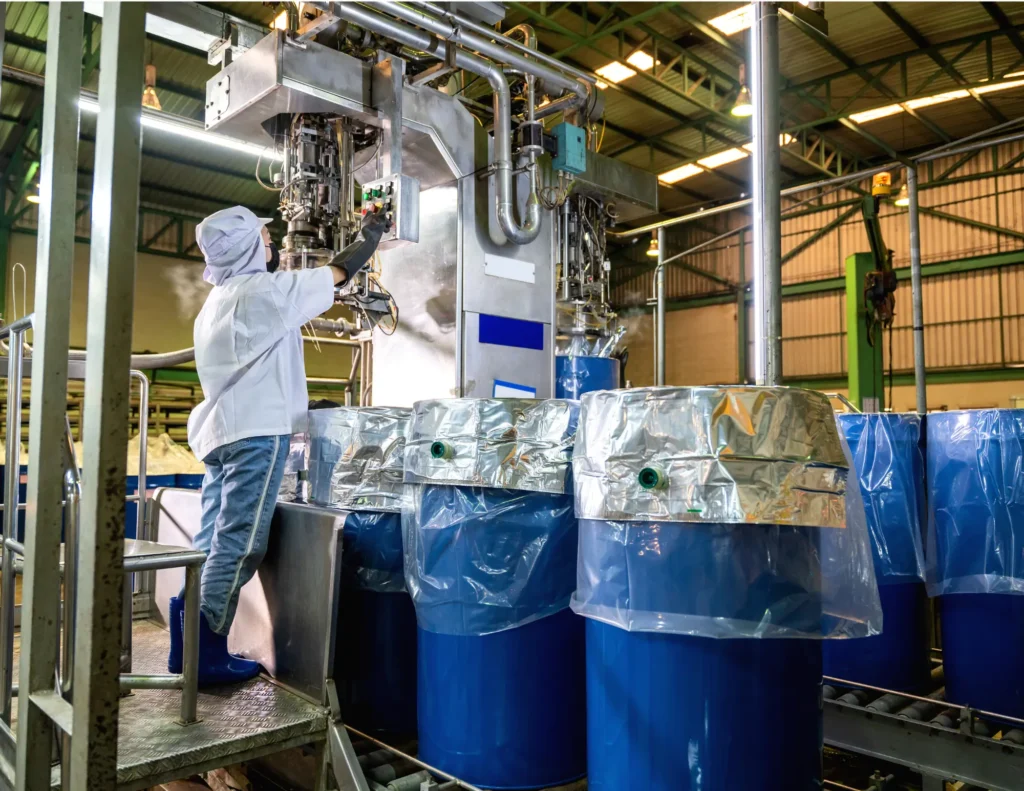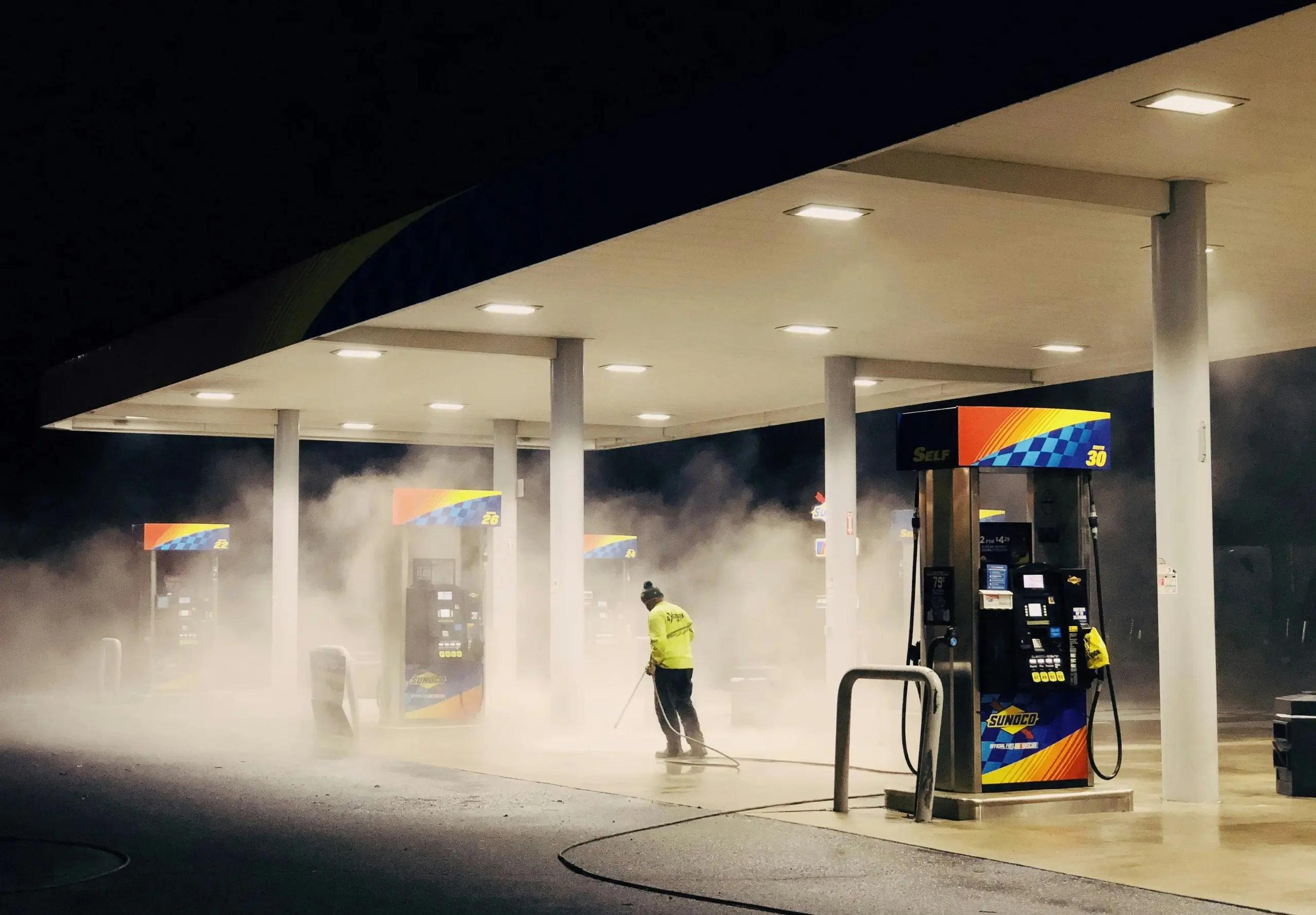Using a pressure washer can make cleaning easy, but adding soap takes it to the next level.
Many people skip this step and miss out on better results. Knowing how to use pressure washer soap correctly means sparkling surfaces with less effort.
It’s not just about spraying water; it’s about using the right mix for the job, including tips to use pressure washing chemicals
Whether you’re tackling grime on your driveway or mildew on your deck, soap makes a difference.
Let’s go into the basics to advance of using pressure washer soap effectively.
Key Takeaways
- Choose the Right Soap: Use the correct type of pressure washer soap for your specific cleaning task to get the best results.
- Proper Soap Addition: Follow instructions to add soap to your pressure washer correctly, ensuring it mixes well with water.
- Effective Application: Apply the soap evenly across the surface for thorough cleaning, using the right nozzle and technique.
- Rinse Thoroughly: Always rinse off the soap completely after application to avoid residue and streaks.
- Deep Cleaning Tips: For a deep clean, let the soap sit for a few minutes before rinsing, but don’t let it dry on the surface.
- Safety First: Wear protective gear and follow safety guidelines when using pressure washer soap to protect yourself and your equipment.
1. Types of Pressure Washer Soap

1. General Use Soaps
General-use soaps are made for many surfaces. They work on cars, patios, and siding. These soaps are great because they are versatile.
Eco-friendly and biodegradable options are important. They help the environment by breaking down naturally. Multi-purpose pressure washing chemicals remove light stains and dirt well. They make cleaning easier and quicker.
2. Wood Deck Cleaners
Wood decks need special care. Gentle cleaners protect the wood’s integrity. Some products fight mold, mildew, and algae.
These problems can damage the wood over time. Pre-soaking the deck helps loosen dirt. Post-rinsing ensures no soap is left behind. This keeps the wood healthy and clean.
3. Floor Detergents
Different floors need different detergents. Concrete, tile, and other hard floors each have unique needs. Non-slip formulas are crucial for safety after cleaning.
Slippery floors can be dangerous. Combining mechanical scrubbing with high-pressure soap works best. This method cleans deeply and thoroughly.
Here is a detailed breakdown of the types of chemicals;
| Type of Chemical | Common Uses | Key Properties | Safety Considerations |
|---|---|---|---|
| Surfactants | General cleaning, stain removal | Reduce surface tension, emulsify oils | Can cause skin irritation, use gloves |
| Bleach | Disinfection, whitening | Strong oxidizing agent | Corrosive, used in well-ventilated areas |
| Enzymes | Breaking down organic matter | Biodegradable, specific to certain stains | Generally safe, but avoid inhalation |
| Solvents | Dissolving grease and oils | Volatile, effective on tough stains | Flammable, use with caution |
| Acids | Removing mineral deposits | Strong cleaning power | Corrosive, handle with care |
| Alkalis | Degreasing, saponification | High pH, effective on fats | Can cause burns, use protective gear |
| Disinfectants | Killing bacteria and viruses | Antimicrobial properties | Toxic if ingested, follow instructions |
2. Adding Soap to Your Pressure Washer
1. Soap Selection
Choosing the right soap is crucial. Different surfaces need different soaps. For example, use a mild detergent for cars. Use a stronger soap for concrete.
Avoid harsh chemicals. They can damage your pressure washer. Always read labels carefully.
Check reviews online. Ask friends for recommendations. This helps you find the best soap for your needs.
2. Step-by-Step Guide
- Preparation: Wear protective gear like gloves and goggles. Safety first!
- Mixing Soap: Follow the instructions on the soap bottle. Mix it with water as directed.
- Loading Soap: Attach the soap injector to your pressure washer. Connect the high-pressure hose connection securely.
- Applying Soap: Start spraying from the bottom up. Cover the entire surface evenly.
- Waiting Time: Let the soap sit for a few minutes. This helps break down grime.
- Rinsing: Switch to high-pressure mode. Rinse from top to bottom for best results.
3. Applying Pressure Washer Soap
1. Technique Mastery
Adjust the pressure settings on your pressure washer. Use a lower setting for soap application. Choose the right nozzle. A pressure washer soap nozzle is ideal. It helps in spreading the soap evenly.
Maneuver the pressure washer smoothly. Move it in overlapping strokes. This ensures even distribution of the soap. Keep the nozzle at a consistent distance from the surface.
Prevent damage by using proper technique. Delicate surfaces need extra care. Avoid high pressure on these areas. Test on a small spot first.
2. Surface Specific Tips
Different surfaces need different approaches. For vinyl siding, use a gentle stream and low-pressure setting. Automobiles require special attention too.
Test the pressure washer detergent on a small area first. This prevents any unwanted reactions. Adjust the soap concentration based on soil level. More dirt needs more soap.
Outdoor furniture can be tricky. Use a milder detergent and lower pressure. This avoids damaging the material.
4. Rinsing After Soap Application
1. Best Practices
Regular maintenance of your pressure washer is essential. Clean the soap dispensing components often. This keeps them working well. Always perform a fresh water rinse through the machine after using soap. This prevents clogs and buildup.
Choose eco-friendly soaps. They are better for the environment. Use water wisely to conserve resources. Sustainable cleaning helps protect nature.
2. Timing and Technique
Let the soap sit on surfaces for the right amount of time. This is called dwell time. For most surfaces, 5-10 minutes works best.
Clean early in the morning or late in the afternoon. Avoid rapid drying of soap by the sun. This makes rinsing easier.
Apply soap efficiently to save time and water. Use smooth, overlapping strokes. Rinse thoroughly with a steady stream of water.
5. Achieving Deep Clean Results
1. Effective Soap Use
Correct soap dilution ratios are crucial. Too much soap can damage your pressure washer. Too little won’t clean well. Always follow the manufacturer’s instructions.
Water temperature also matters. Hot water can boost the soap’s cleaning power. Cold water may not be as effective, especially on greasy surfaces.
For tough stains, reapply the soap. Let it sit for a few minutes. Then, rinse again. This technique helps remove stubborn dirt and grime.
2. Assessing Cleanliness
After rinsing, inspect the cleaned area. Look for any residue or missed spots. If you find any, do a touch-up cleaning.
Touch-up cleaning is important. It ensures that every part is thoroughly cleaned. Don’t ignore small spots; they can make a big difference.
Document your results. Take before-and-after pictures. This helps track your progress and improve your technique over time.
6. Final Remarks
here you have it! Using pressure washer soap isn’t rocket science. You now know the types, how to add it, apply it, and rinse it off for that spotless finish. Just follow these steps, and you’ll be a pro in no time.
Ready to get started? Grab your pressure washer and soap up! Share your cleaning tips and tricks with us. Got questions? Drop them in the comments. Let’s keep those surfaces sparkling clean!
Frequently Asked Questions
1. What types of pressure washer soap can I use?
You can use detergents specifically designed for pressure washers. These soaps are formulated to be safe and effective. Avoid using regular household soaps, as they can damage your pressure washer; chemicals not to mix.
2. How do I add soap to my pressure washer?
First, check your pressure washer’s manual. Typically, you’ll fill the detergent tank or attach a soap nozzle. Make sure to dilute the soap if required.
3. Can I apply pressure washer soap directly on surfaces?
Yes, but always start with a low-pressure setting. This helps the soap to spread evenly without damaging surfaces. Think of it like spreading butter on toast—gentle and even.
4. How long should I leave the soap on before rinsing?
Allow the soap to sit for about 5-10 minutes. This gives it time to break down dirt and grime. But don’t let it dry out; think of it like marinating meat—it needs time but not too much.
5. Is it necessary to rinse after applying pressure washer soap?
Absolutely! Rinsing removes all the loosened dirt and soap residue. Skipping this step is like washing your hair without rinsing out the shampoo—messy and ineffective.
6. Can I achieve deep clean results with a pressure washer soap?
Yes, using the right soap and technique can give you sparkling results. It’s like using the right ingredients in a recipe—it makes all the difference.
7. Are there eco-friendly pressure washer soaps available?
Yes, for many chemical manufacture like us, SP Cleaning offer biodegradable and eco-friendly options. They’re just as effective and kinder to our planet. It’s a win-win situation!



